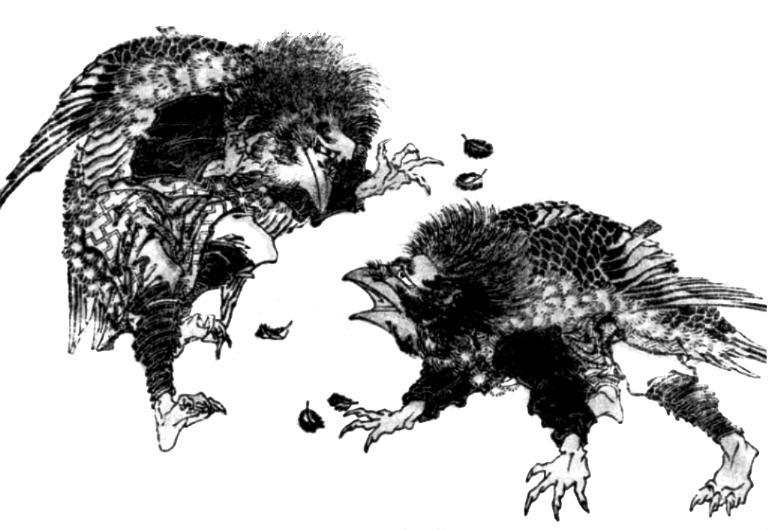
|
|
|

|

|
|
|

|

|
|
The tengu shapeshifters of Japanese legend were not as troublesome or mischievous as the kitsune or tanuki. Although some pranksters were found among them, they are more often seen as wise and respected teachers. However, portrayals changed through time, with the personality and purpose of the tengu being quite different in different eras.
Unlike the chaotic behavior associated with kitsune and tanuki shapeshifters, the tengu shapeshifters often had a moral purpose if they played pranks or spread destruction. They taught patience to the impatient, they taught manners to thieves, and they avenged themselves on murderers. It was said that the best martial arts teachers in the world were all tengu shapeshifters. Students climbed the mountains searching for tengu, hoping to learn magic or advanced martial arts. Ninja magic was especially associated with the tengu, but honorable techniques could also be learned, and some respected warriors have reported that they learned their skills from a tengu master. The origin of the tengu is also more mysterious. Sometimes they were humans who had become tengu, such as Buddhist priests who were cursed by their peers for some failing. Other times, tengu were portrayed as demigods, demons, or a race of monsters entirely separate from humans. The legends that favored this view often spoke of tengu nests, hidden with great care high in the mountains and filled with enormous eggs. Female tengu are rarely mentioned, and are sometimes thought to look so different from the males that the two could easily be mistaken for entirely separate species. Tengu had a place, not just in folklore, but in religious mythology as well. Worship at tengu shrines was once common, as was the practice of wearing a tengu mask while going on a religious pilgrimage. In the Buddhist scheme of things, sometimes the tengu was thought to be a demon. As a Buddhist demon, the tengu was a rather simple-minded fellow who only had one purpose: turn the faithful from their path.
The text on this page is copyright 2007 by Jamie Hall. Please use proper citation if you are using this website for research. |